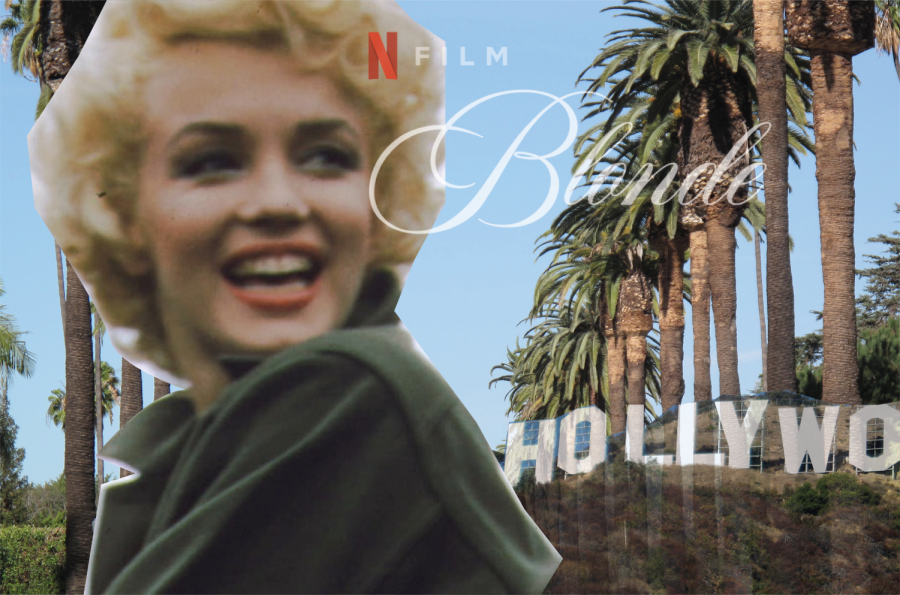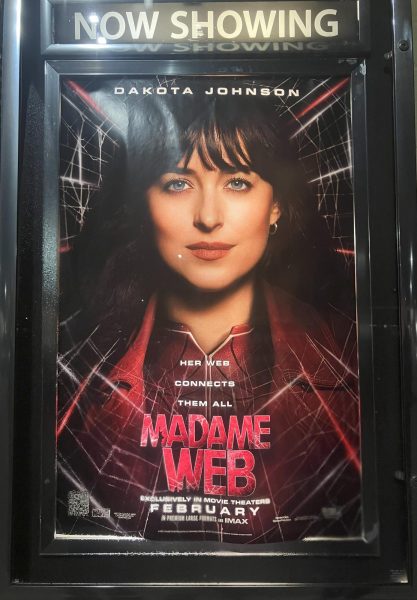Blonde: Exposé or exploitation?
Marilyn Monroe. That is all one needs to say to trigger images of the glamorous Golden Age of Hollywood. Flashing cameras, elegant hairstyles, chic outfits. And above all, Marilyn Monroe, usually pictured in her famous white dress, standing over the subway vent.
Since Monroe’s death in 1962, she has been idolized, analyzed, advertised, fetishized, but most of all, exploited. Unfortunately, that streak continues with Andrew Dominik’s newest addition, Blonde, which premiered this fall on Netflix. Starring Ana de Armas, the movie follows the rise and demise of, arguably, one of the most famous women in history.
At the Venice Film Festival, de Armas said, “I feel all of us felt so much respect and responsibility to do good to [Monroe] and to honor [Monroe].” Blonde fails to project this sentimentality towards its subject.
Blonde was doomed the moment Dominik decided to tell Monroe’s story, based on author Joyce Carol Oates’s bestselling 2000 biographical fiction novel, Blonde. The book takes inspiration from moments that were either rumored, reported, or fictionalized, pursuing the theme of childhood trauma’s effects on adult life.
While Dominik did extensive research on Monroe, he could not move past the “tragic Marilyn” image that pop culture continues to depict. While speaking with the British Film Institute (BFI), Dominik said he felt Marilyn did not have a lot of friends, especially female friends. This is certainly not true. Academy Award-winning actress Shelley Winters and the queen of jazz herself, Ella Fitzgerald, were among Marilyn’s closest friends. It is clear that Dominik did not think very highly of Monroe’s work.
In an outtake from this interview, Dominik asked, “Does anyone watch Marilyn Monroe movies?” The interviewer replied that she and her friends watch Gentlemen Prefer Blondes, a 1953 classic about female friendship starring Monroe and Jane Russell. Dominik then described the female characters as “well-dressed whores” rather than recognizing them as witty and intelligent characters.
Blonde was destined to fail with Dominik at the helm. He saw Marilyn as only a tragic sexual fantasy. The movie is about Monroe’s life told through the male gaze.
“The film is a rescue fantasy,” Dominik said. “We feel we have a special intimacy with her character. That’s the attraction to Marilyn, that feeling that we’re the only ones who understand. That we could have saved her somehow. And maybe the flip-side of that is a punishment fantasy, or a sexual fantasy.”
Dominik even questioned the meaning of Monroe’s iconic song in Gentlemen Prefer Blondes, “Diamonds Are a Girl’s Best Friend.” He asked, “So, when she sings ‘Diamonds Are a Girl’s Best Friend’ – it’s like, is that sisterly advice, ‘If you’re gonna fuck, make sure you get paid’? Or is it just romanticized whoredom?”
The song is neither of these things. In the movie, Monroe’s fiancé accuses her of being a gold digger. The song is meant as a slap in the face, with Monroe telling her (now ex) fiancé, “You think of me as a gold digger? Fine! I’ll show you what a gold digger looks like.” In the movie, it has nothing to do with sex, but rather with Monroe fully owning what everyone in the film thinks she is.
The most disturbing thing about Blonde is Dominik’s constant blurring of fact and fiction. The film features several incidents with no evidence of having occurred in reality. For example, there were a couple of scenes of Monroe getting an abortion. According to multiple sources, Monroe had a lifelong struggle with endometriosis, a condition that, among other symptoms, can significantly impact fertility. Despite this, Monroe tried her hardest to become pregnant and carry a child to full term. Monroe has been reported saying by multiple sources that she would rather have a child than keep a contract with a studio.
Sex scenes were not lacking in this movie. This adds to the lies because almost all of the relationships she has in the film stem from either rumors or straight fiction. A polyamorous relationship depicted between Monroe, Charlie Chaplin Jr., and Edward G. Robinson Jr. was entirely made up. Although Chaplin Jr. did claim that he and Monroe were briefly involved with one another, there seems to have been no romantic interaction that included Robinson Jr. Another scene involves Monroe and President John F. Kennedy, also based on rumors.
Dominik’s sexual vision of the icon could not have been farther from the real Monroe. Monroe wrote in her autobiography, “Why I was a siren, I hadn’t the faintest idea. There were no thoughts of sex in my head. I didn’t want to be kissed. I was as unsensual as a fossil.”
One important aspect of Monroe, absent from the film, was her curvy body. It may seem a minor detail, but getting her figure right is just as crucial as getting the costumes right. Monroe popularized the hourglass look in the 1950s. Soon after, stars such as Sophia Loren and Jayne Mansfield gained popularity because of their Marilyn-esque figures. de Armas’ body was much different, with no apparent attempt to emulate Monroe’s. Being such a significant aspect of her rise, it was a shame to leave out.
One particularly disrespectful scene was the final one where Monroe died, filmed in the actual room where she overdosed. The scene shows Monroe Monroe facing down on her stomach in her bed, the exact position Marilyn’s body was found. There is something disgusting and volatile about filming in the actual location of a real death scene.
While the movie briefly touches on Monroe’s high intelligence during her first meeting with Arthur Miller, her soon-to-be third husband, that is the first and last time we see a peek at the real star– coupled with times that de Armas captured the essence of Monroe and nailed her real voice. However, due to Dominik’s poor directing overall, it isn’t anything to write home about.
During her lifetime Monroe fought for equal pay in the industry and even planned to open her own equal-pay studio. Not to mention she also fought for more recognition of Black entertainers. There were so many other incredible qualities of Monroe dismissed from the film in order to front a very one-dimensional story. This lack of care and originality comes at the expense of the Hollywood icon.
Despite the constant bombardment of shocking scenes, the movie can be summed up as dull. The total runtime of Blonde is two hours and 47 minutes, but it felt much longer. The film falls into a state of repetitiveness, often rotating between something good happening, then something tragic, then a “shocking” scene followed by a nude or sex scene. Because the director never slows down to allow the audience to create a deeper connection and understand who the real Norma Jean was, the pain endured by de Armas’s Monroe falls flat. The film gives the impression that the screenwriter did nothing more than watch a few Monroe movies and read a dramatized telling of Monroe’s life.






